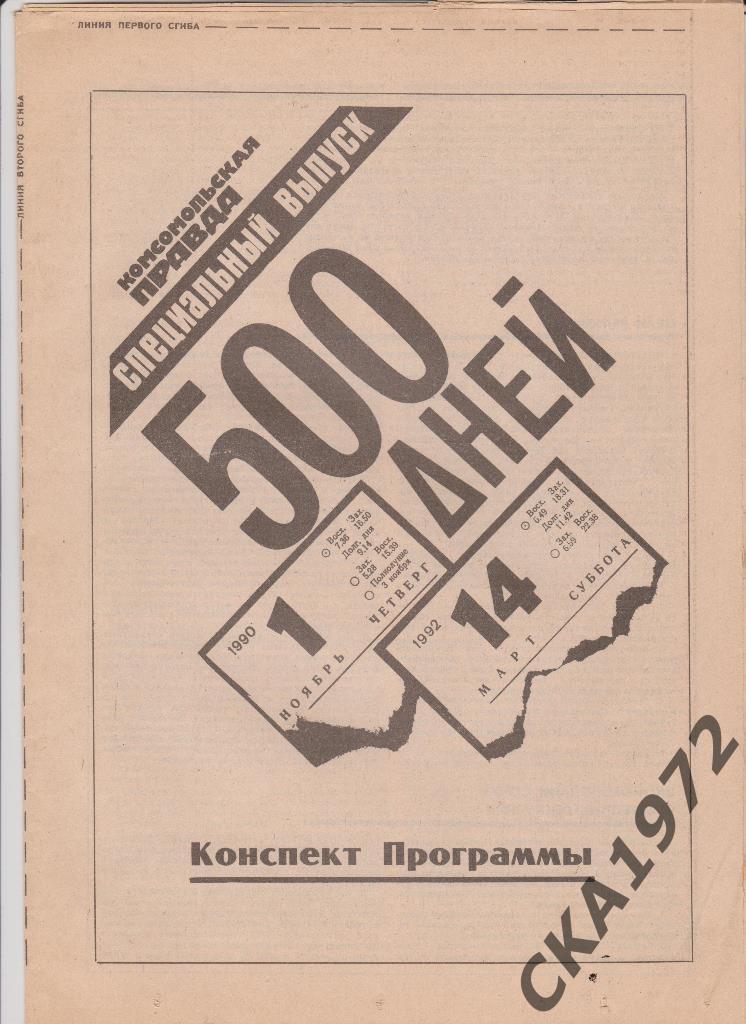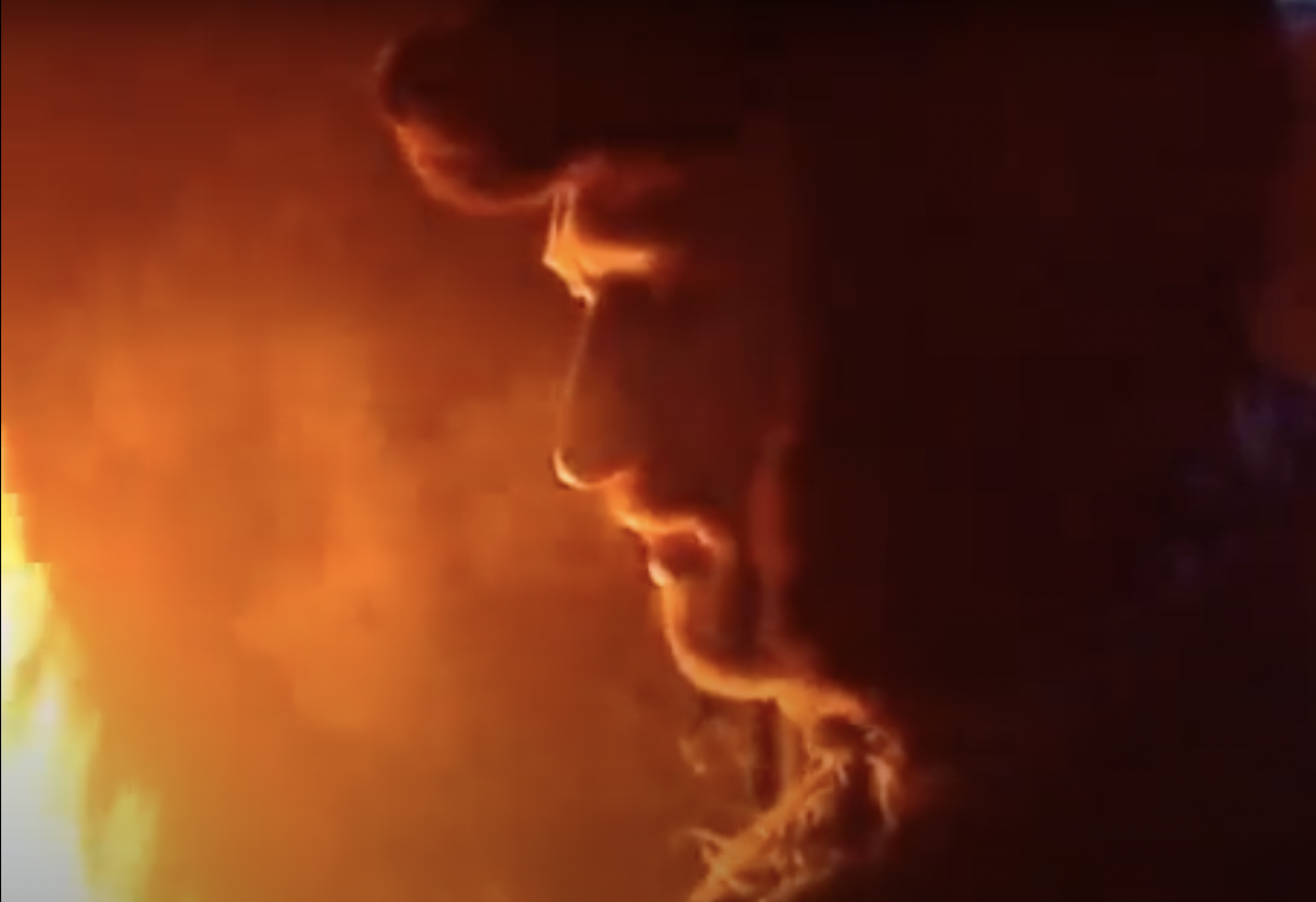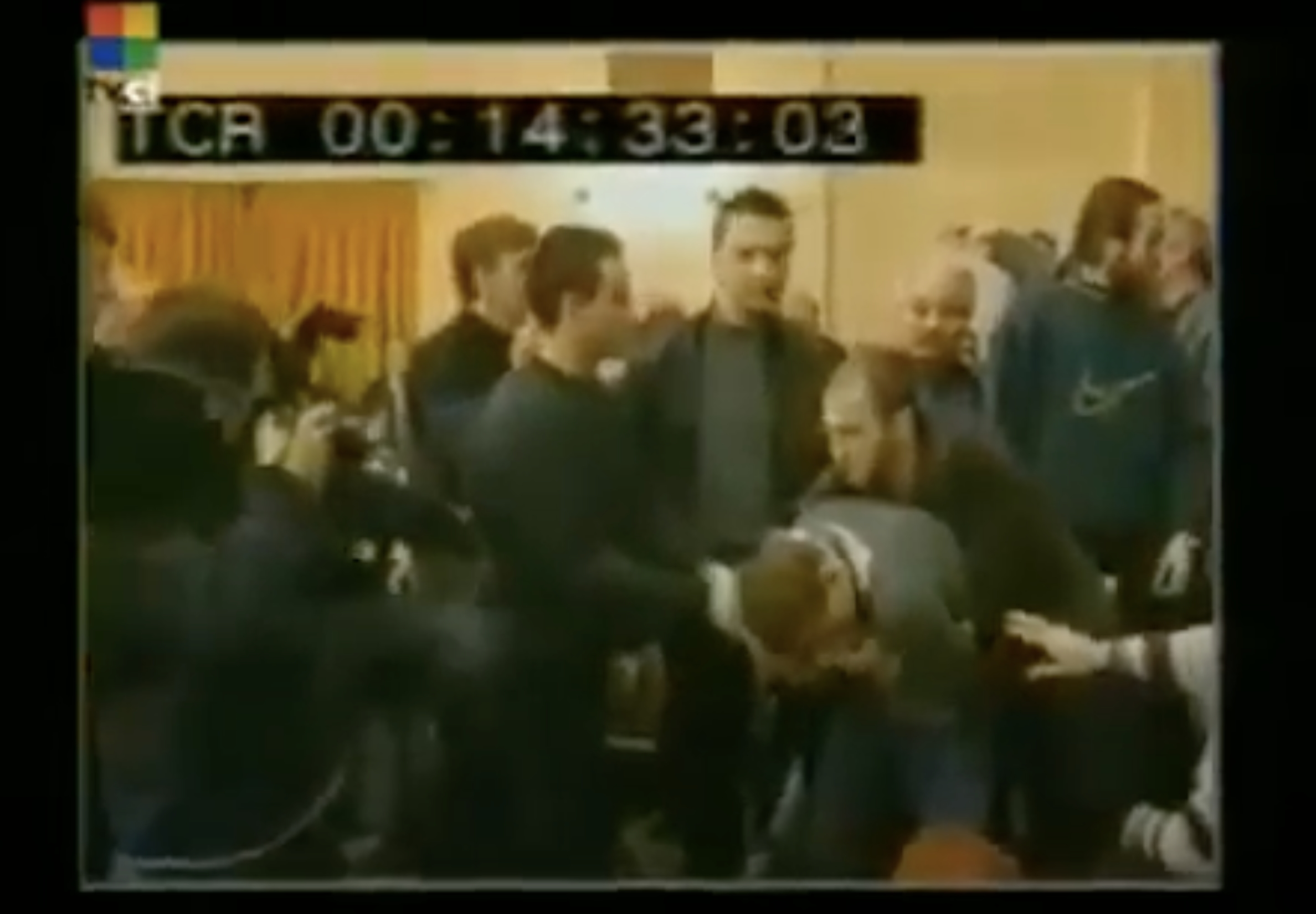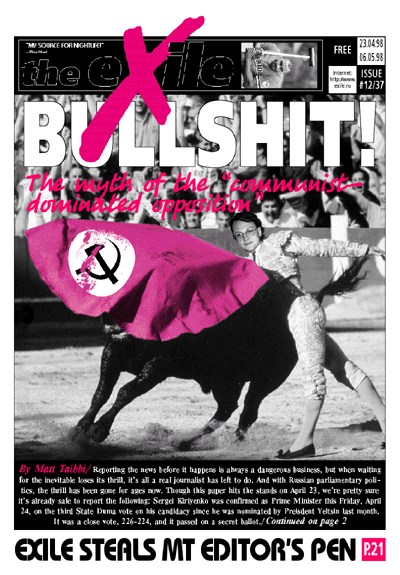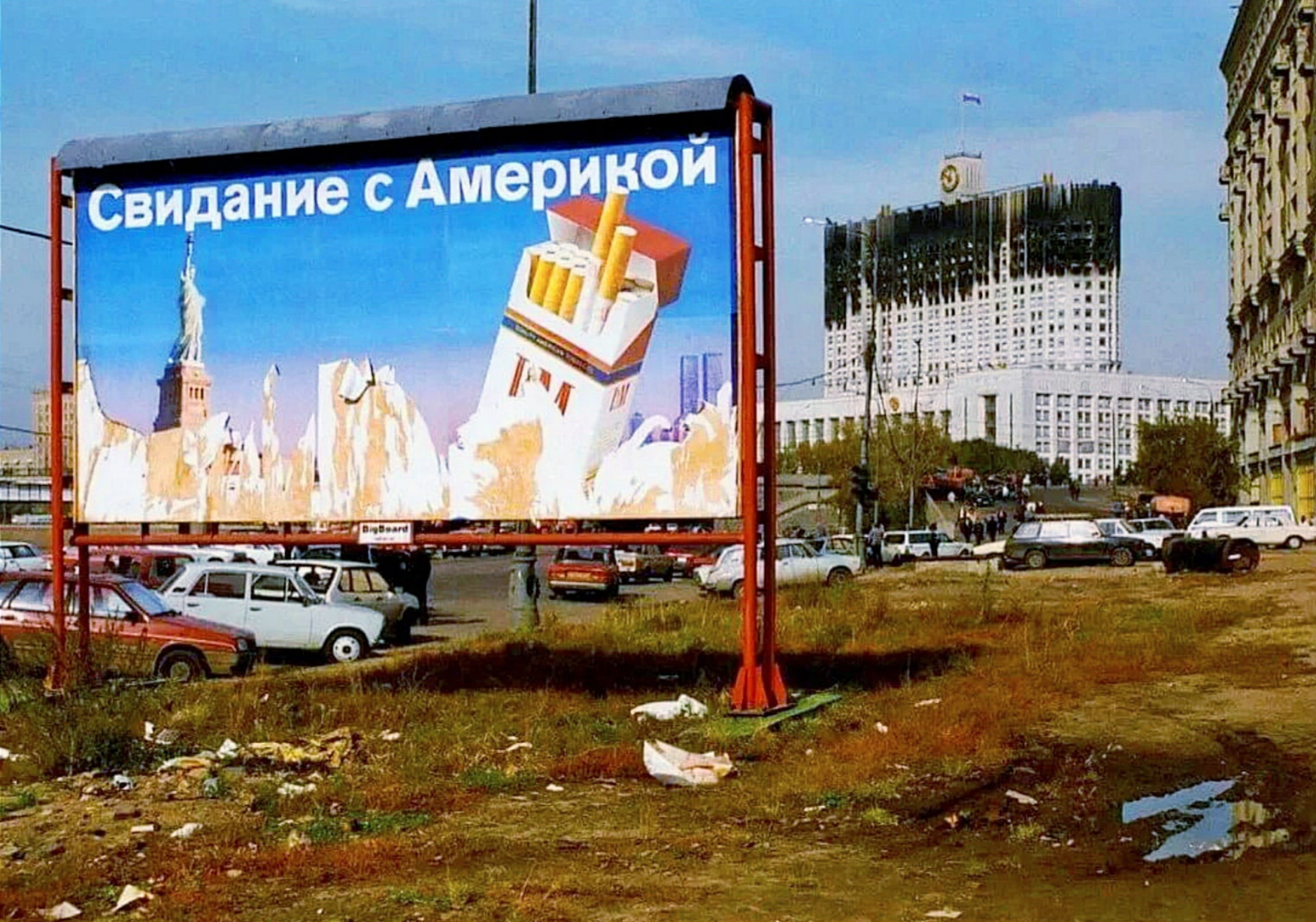Search Results
Search Terms
Kletchataia sumka, Chelnoki, and Ostap Bender
An entry in “Argumenty i fakty”'s occasional column "Ugolok O. Bendera [Ostap Bender’s Corner]," a reference to Il’f and Petrov’s trickster hero of the 1920s, gave advice to beginning "chelnoki," or small-trade merchants who would travel—some across international borders—to find cheap items and sell them at markups back home. The checkered bag became a symbol of these petty merchants and of the hand-to-mouth experience of living in the 1990s.
“500 Days: Program Summary,” a special issue of "Komsomolskaya pravda"
A special issue of the long-running Soviet daily "Komsomolskaya pravda" dedicated to economist Stanislav Shatalin's (1934-1997) "500 days" plan for economic reform under Mikhail Gorbachev (1931-2022).
View Artifact
Yeltsin's Culler (Sanitar Yeltsina)
Delo Muryleva. Smert' za kvartiry (The Murylev case. Death for Apartments). First episode of the crime show Kriminal'naia Rossiia (NTV, 1995-2002, with various later versions on TVS, Pervyi kanal, and others)
“Stalin, Beria, Gulag!”: The Natsboly Oppose Gaidar and Mikhalkov
Two early direct actions organized by young members of the National Bolshevik Party combined self-martyrdom with totalitarian stiob.
the eXile: Bespredel for Expats
The Moscow-based, English-language magazine the eXile combined gonzo journalism and stiob to provide unique reporting on post-Soviet Russia. At the same time, the outlet fetishized the very 1990s-era lawlessness or bespredel—not to mention Western sexual and economic exploitation of Russia—that it nominally denounced and condemned.
An Encounter with America
This billboard advertising the cigarette brand L&M is positioned in front of the burned façade of the Russian White House, which was bombed on Yeltsin’s orders during the 1993 Constitutional Crisis. It possibly inspired one of the most famous passages from Victor Pelevin’s iconic satire of the 1990s, “Generation P” (titled, in English, “Homo Zapiens”).

